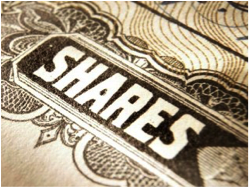Mutual Fund Share Classes
Guest Blog: Sandy Gallemore, Director and Vice President for Education, InvestEd Inc.
Subscribe to the InvestEd Inc. free newsletter: http://investedinc.org/FreeNewsletter/Signup.aspx
 A mutual fund is a pool of money from many shareholders that is invested in stocks, bonds, or other investment assets. In general, mutual funds may be identified as those that charge a sales fee (load funds) and those that do not charge a sales fee (no-load funds). Many of the load funds offer several classes of shares.
A mutual fund is a pool of money from many shareholders that is invested in stocks, bonds, or other investment assets. In general, mutual funds may be identified as those that charge a sales fee (load funds) and those that do not charge a sales fee (no-load funds). Many of the load funds offer several classes of shares.
While each share class of a given mutual fund has the same investment policies and objectives and includes money in the same investments, the fees associated with each class likely will cause some difference in the performance results. When a fund offers several share classes, the investor is able to select the class that best suits that investor’s goals and time horizon. The main share classes are identified as Class A shares, Class B shares, and Class C shares.
Class A shares charge a front-end load, or sales fee. This means a sales charge is taken from the investment monies the individual sends to the mutual company before the money is invested in the fund. For example, if an individual sends $1000 to be invested in a fund with a front-end load, and the front-end load is five percent ($1000 x .05 = $50), only $950 of that money will be invested. Some mutual funds reduce the front-end load when a sizable investment is made. A low breakpoint for a reduction in the percent of the front-end load might be $25,000. Although Class A shares do  charge a front-end sales fee, typically they have a lower expense ratio than the other classes of shares.
charge a front-end sales fee, typically they have a lower expense ratio than the other classes of shares.
Class B shares charge a back-end load. This means that the $1000 the investor sends to the mutual fund company is invested fully, without any sales fees coming off the top. Instead, the sales fee is deferred until the fund is sold. Typically, the amount or percentage of the back-end load is reduced each year the fund is held. For example, if the fund has a six percent back-end load, the investor selling the fund during the first year will pay a six percent sales fee before receiving any money. If the investor sells the fund after holding it less than two years, that sales fee will drop to five percent. If the investor sells the fund after holding it for at least six years, no back-end load will be applicable. If the investor holds the Class B shares until the back-end load no longer exists, in effect, these shares revert to Class A shares.
 Class C shares may be identified as level-load shares. Level load means they include a 12b-1 fee, which is a fee applied annually as a fixed percentage of a mutual fund’s average net assets. Capped by law at one percent, many funds will put the fee at 0.25 percent because that amount allows the fund to be identified as a no-load fund. The $1000 the investor sends to the mutual fund company is invested fully, without the sales charges for Class A or Class B shares. Unlike front-end and back-end sales charges, these 12b-1 fees are included in a fund’s operating expenses. They are based on a percentage of the investor’s assets, and typically the fees remain in place as long as the investor holds the fund.
Class C shares may be identified as level-load shares. Level load means they include a 12b-1 fee, which is a fee applied annually as a fixed percentage of a mutual fund’s average net assets. Capped by law at one percent, many funds will put the fee at 0.25 percent because that amount allows the fund to be identified as a no-load fund. The $1000 the investor sends to the mutual fund company is invested fully, without the sales charges for Class A or Class B shares. Unlike front-end and back-end sales charges, these 12b-1 fees are included in a fund’s operating expenses. They are based on a percentage of the investor’s assets, and typically the fees remain in place as long as the investor holds the fund.
If you decide you like a particular mutual fund and that fund is a “load” fund, be sure to check the fund prospectus to learn about the types of share classes offered and the fees and policies associated with them. For an in-depth tutorial on mutual funds, check out the Mutual Fund Basics Tutorial at Investopedia.
If you have any questions, feel free to post your inquiries on our Facebook page.